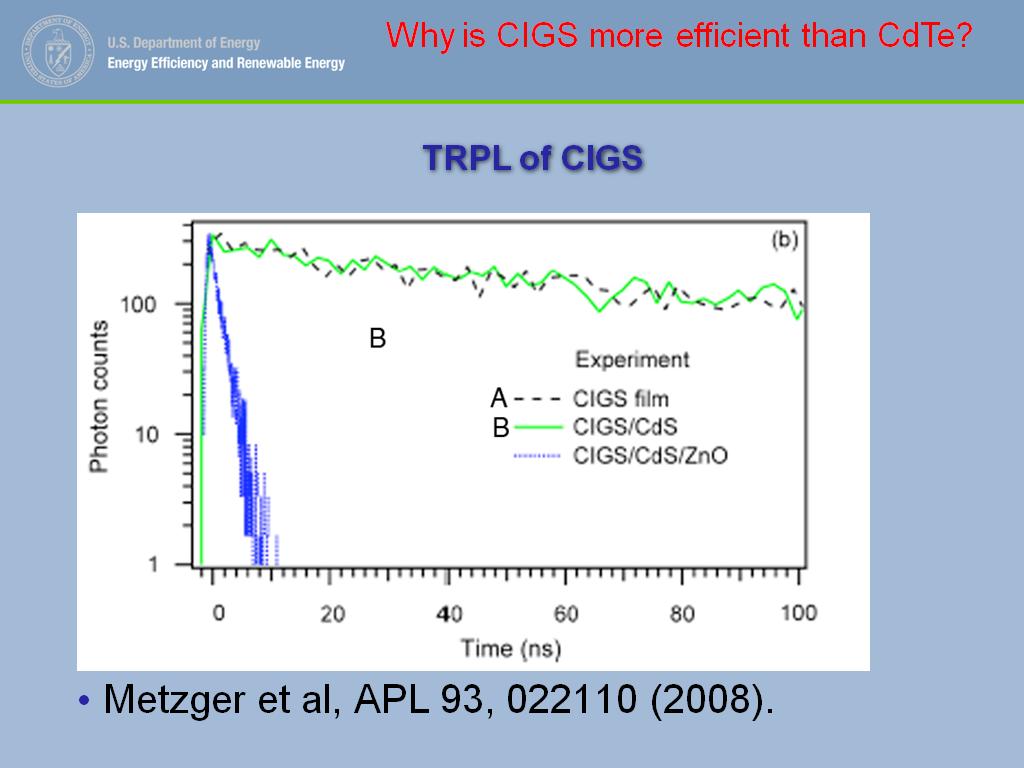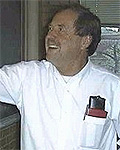Analysis of Techniques for Measuring Carrier Recombination Lifetime
Analysis of Techniques for Measuring Carrier Recombination Lifetime
-
 1. ANALYSIS OF TECHNIQUES FOR MEA…
0
00:00/00:00
1. ANALYSIS OF TECHNIQUES FOR MEA…
0
00:00/00:00 -
 2. TECHNIQUES AVAILABLE
337.70437103770439
00:00/00:00
2. TECHNIQUES AVAILABLE
337.70437103770439
00:00/00:00 -
 3. MEASUREMENT PHYSICS
558.35835835835837
00:00/00:00
3. MEASUREMENT PHYSICS
558.35835835835837
00:00/00:00 -
 4. (TRPL)
789.78978978978978
00:00/00:00
4. (TRPL)
789.78978978978978
00:00/00:00 -
 5. TRPL of CIGS
898.06473139806474
00:00/00:00
5. TRPL of CIGS
898.06473139806474
00:00/00:00 -
 6. Resonant Coupled Photoconducti…
968.90223556890226
00:00/00:00
6. Resonant Coupled Photoconducti…
968.90223556890226
00:00/00:00 -
 7. Theory of RCPCD
1064.9315982649316
00:00/00:00
7. Theory of RCPCD
1064.9315982649316
00:00/00:00 -
 8. RCPCD MEASUREMENT OF WAFER IN …
1267.6343009676343
00:00/00:00
8. RCPCD MEASUREMENT OF WAFER IN …
1267.6343009676343
00:00/00:00 -
 9. TRPL vs RCPCD
1386.8201534868201
00:00/00:00
9. TRPL vs RCPCD
1386.8201534868201
00:00/00:00 -
 10. Polycrystalline CdTe
1517.3506840173507
00:00/00:00
10. Polycrystalline CdTe
1517.3506840173507
00:00/00:00 -
 11. Photoconductive lifetimes are …
1600.4337671004339
00:00/00:00
11. Photoconductive lifetimes are …
1600.4337671004339
00:00/00:00 -
 12. Surface Recombination from Var…
1674.9416082749417
00:00/00:00
12. Surface Recombination from Var…
1674.9416082749417
00:00/00:00 -
 13. 2PE TRPL lifetime analysis –…
1833.6336336336337
00:00/00:00
13. 2PE TRPL lifetime analysis –…
1833.6336336336337
00:00/00:00 -
 14. MICROWAVE REFLECTION
1954.4210877544213
00:00/00:00
14. MICROWAVE REFLECTION
1954.4210877544213
00:00/00:00 -
 15. Maxwells Equations Soluktion
2055.121788455122
00:00/00:00
15. Maxwells Equations Soluktion
2055.121788455122
00:00/00:00 -
 16. NREL Data at 20 GHz
2091.358024691358
00:00/00:00
16. NREL Data at 20 GHz
2091.358024691358
00:00/00:00 -
 17. Recombination Lifetime in Mult…
2098.0313646980317
00:00/00:00
17. Recombination Lifetime in Mult…
2098.0313646980317
00:00/00:00 -
 18. Apparatus Block Diagram
2192.8595261928594
00:00/00:00
18. Apparatus Block Diagram
2192.8595261928594
00:00/00:00 -
 19. PCD-FCA Combination
2498.3650316983653
00:00/00:00
19. PCD-FCA Combination
2498.3650316983653
00:00/00:00 -
 20. PUMP-PROBE DATA
2648.7487487487488
00:00/00:00
20. PUMP-PROBE DATA
2648.7487487487488
00:00/00:00 -
 21. Mobility Variation with Inject…
2709.90990990991
00:00/00:00
21. Mobility Variation with Inject…
2709.90990990991
00:00/00:00 -
 22. Non-Proprietary Partnering Opp…
2881.5148481815149
00:00/00:00
22. Non-Proprietary Partnering Opp…
2881.5148481815149
00:00/00:00 -
 23. MEASUREMENT ISSUES (+/-)
2921.1211211211212
00:00/00:00
23. MEASUREMENT ISSUES (+/-)
2921.1211211211212
00:00/00:00 -
 24. MEASUREMENT ISSUES (+/-)
3008.541875208542
00:00/00:00
24. MEASUREMENT ISSUES (+/-)
3008.541875208542
00:00/00:00 -
 25. SUMMARY
3086.8201534868203
00:00/00:00
25. SUMMARY
3086.8201534868203
00:00/00:00
 Dr. Richard K. Ahrenkiel is a Research Professor of Metallurgical and Materials Engineering at the Colorado School of Mines in Golden, Colorado. He is also a Consultant and Research Fellow Emeritus at the National Renewable Energy Laboratory (NREL), where he worked from 1981 to 2005. Prior to NREL, he worked at Eastman Kodak Research laboratories, and at the Los Alamos National Laboratory. Dr. Ahrenkiel’s area of specialization is the measurement and characterization of photovoltaic cells and materials, and he is one of the world experts in the area of carrier recombination and carrier lifetime. He invented a unique technique for measuring the excess carrier lifetime in materials. This technique, named Resonance-coupled photoconductive decay (RCPCD), has been extensively applied to silicon and non-silicon materials. Dr. Ahrenkiel received a B.S. degree in Engineering Physics and his M.S. and Ph.D. degrees in Physics at the University of Illinois, Urbana.
Dr. Richard K. Ahrenkiel is a Research Professor of Metallurgical and Materials Engineering at the Colorado School of Mines in Golden, Colorado. He is also a Consultant and Research Fellow Emeritus at the National Renewable Energy Laboratory (NREL), where he worked from 1981 to 2005. Prior to NREL, he worked at Eastman Kodak Research laboratories, and at the Los Alamos National Laboratory. Dr. Ahrenkiel’s area of specialization is the measurement and characterization of photovoltaic cells and materials, and he is one of the world experts in the area of carrier recombination and carrier lifetime. He invented a unique technique for measuring the excess carrier lifetime in materials. This technique, named Resonance-coupled photoconductive decay (RCPCD), has been extensively applied to silicon and non-silicon materials. Dr. Ahrenkiel received a B.S. degree in Engineering Physics and his M.S. and Ph.D. degrees in Physics at the University of Illinois, Urbana.